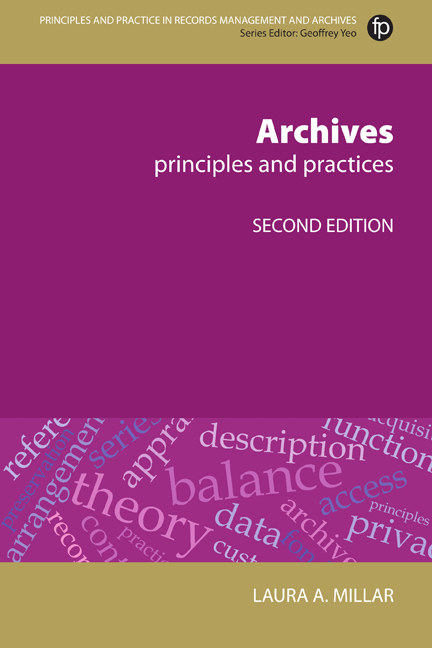Foreword to the second edition
Published online by Cambridge University Press: 08 June 2018
Summary
Seven years after Laura Millar's eloquent and wide-ranging book was first published, it is ever more apparent that in future the great majority of records will be created and used in digital form. At present, most record-making environments are hybrid – to varying extents, paper records continue to be created and kept alongside their digital counterparts – but the balance is firmly shifting towards the digital. Organizations are now disposing of their filing cabinets at an unprecedented rate. Even if the wholly paperless office may still prove to be a chimera, the ‘less-paper’ office is now a visible reality. It has also become clear that archivists will very soon face, if they are not already facing, a digital deluge. The world is creating massive amounts of digital content, and the archivists of the future will encounter quantities of records that exceed anything that archivists have experienced in the past. In this age of digital abundance, human society will still look for evidence of, and information about, actions that have been undertaken, events that have occurred, decisions that have been made, and rights that have been protected, abused or amended. Records and archives will still be needed, and the long-standing archival principles that Millar expounds will be no less valid, but the methods and techniques required to put those principles into practice will often be very different.
In this new and extensively revised second edition, Millar provides greatly expanded coverage of digital concerns. In place of the separate chapter on digital archives that concluded the first edition, discussion of digital issues is now woven into every chapter of the book. Of course, we still have – and will continue to have – the legacy of many centuries of archives created using paper and other analogue media; the skills to manage records created in the past by non-digital means will remain essential, and Millar does not neglect them. But in recasting her book to take account of the fast-moving digital revolution, she offers us an archival manual for the twenty-first century.
- Type
- Chapter
- Information
- ArchivesPrinciples and Practices, pp. xv - xviPublisher: FacetPrint publication year: 2017



